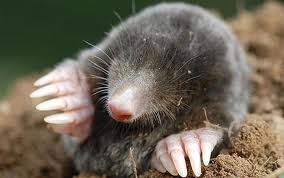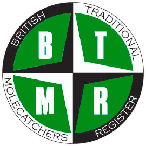
Tel No: 07769620549

Moles
Mole Activity: The mole is rarely seen, spending most of its life underground. The first sign of a mole problem is usually the appearance of several mounds of earth or molehills in the garden lawn or within the property grounds.
Actively digging throughout the year the mole establishes a large network of underground tunnels which become its habitat and feeding runs, there may be little evidence above ground of its presence.
Molehills spring up when the tunnel systems are being enlarged in preparation for the breeding season or when the moles are extending or repairing existing tunnels, unfortunately for some onto a nicely manicured lawn or perfectly conditioned golf course or playing field.
The tunnels vary in depth from just beneath the surface of the ground to about 70cm down and can be over 70 metres long. The shallow surface tunnels are short lived, with the deeper tunnels being used for breeding and feeding.
The mole regularly patrols its network of tunnels in search of earthworms, insects and grubs. Research suggests that the mole works and sleeps at four hourly intervals, becoming more active early in the morning and at dusk.
Moles are often referred to as being solitary and territorial and not tolerating others; although our experience has proved that several can be active in one area. Up to 20 moles have been caught in an area the size of a square acre. Moles are aggressive and will fight over territories.
Why Control Moles?: Mole control is needed when the digging activities of a mole causes damage and destruction. Moles thrive in a variety of situations, especially well drained soil where earthworms are most abundant just below the surface. Although moles do not feed on turf grasses they cause destruction by undermining the root system of plants and crops which affect growth. Lawns develop ridges making the ground uneven and the grass will often die off due to the disturbance caused whilst excavating their shallow runs.
Stones bought to the surface by moles excavating in fields can cause inconvenience to farm machinery, cattle feed can become unusable due to soil contamination and bacteria affecting silage quality and their burrows can even lead to subsidence especially in lighter soils. Even small populations of moles can do considerable damage.
Problem sites that we have cleared to date have included:-
•Golf Courses & Cricket Clubs
•School Playing Fields
•Country Parks & Estates
•Sports Grounds
•County Councils
•Equestrian Centres
•Rural Business Parks
•Farmland
•Local Council
•Private Gardens
Control Methods:
Trapping -
Our aim is to install as many traps as possible in the first visit in order to clear the infestation quickly and to keep the costs down. There is a choice of traps on offer in the market, the half barrel or duffus trap is our preferred option. The traps are set underground in the mole’s feeding tunnels, out of view to the public and low enough in order not to damage lawn mowing equipment.
Once the traps have been installed, follow up visits are made to remove moles that have been caught and to inspect and relocate the traps into areas where most activity is found. Several methods of control have been tried and we have found the traditional trapping method to be the most environmentally friendly and humane way of controlling moles.
Small infestations are charged per visit. The good news is, apart from the initial visit you will only be charged for visits where we have caught a mole or a number of moles.
No mole caught – No fee charged.
It is likely that a single mole is the culprit for smaller infestations and will only require two visits to clear the problem, the first one to install the traps and the second to remove the traps and the offending mole.
Larger infestations found in country parks, sports fields, golf courses or farms etc are priced under a system whereby we only charge per mole caught. It is impossible to know the exact amount, but if we estimate that there are in excess of 10 or more moles active, then you can set your own budget and keep costs under control and we will remove as many moles as your budget dictates. You will only be paying for results and areas to be cleared.
Gassing -
Small infestations are charged per visit. The good news is, apart from the initial visit you will only be charged for visits where we have caught a mole or a number of moles.

WTC Pest Control
WTC Pest Control works in the Leek, Cheadle Stoke on Trent, Biddulph, Stafford, Sandbach, Stone, Eccleshall, Newcastle Under Lyme, Uttoxeter, Macclesfield, Congleton areas.
| Moles |
| Wasps |
| Mice |
| Ants |
| Cockroach |
| Rats |
| Flies |
| Squirrels |
| Pigeons |
| Seagulls |
| Bees |
| Moths |
| Moles |
| Wasps |
| Mice |
| Ants |
| Cockroach |
| Rats |
| Flies |
| Squirrels |
| Pigeons |
| Seagulls |
| Bees |
| Moths |